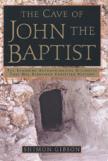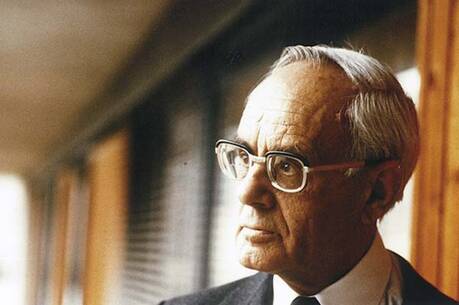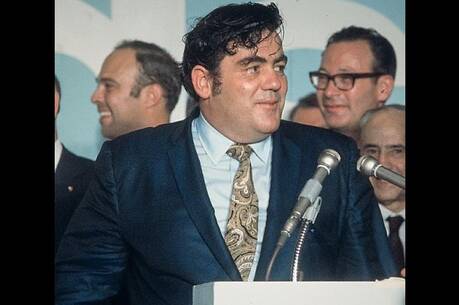Circumstantial Evidence
Archaeological digs in the land of Israel often shed light on the Jewish and Christian Bibles and on the persons and events that occupy their pages. Sometimes the discoveries make us rethink long-held ideas. One need recall only the discovery of the Dead Sea Scrolls, for example, which is helping us to redefine Judaism in the land of Israel in the last centuries B.C.E. and the first century C.E. Recent investigations of Sepphoris, four miles from Nazareth, are prompting reconsideration of the relation of Judaism and Hellenism in Galilee. Examples could be multiplied. Ritual baths, ossuaries and inscriptions continue to be discovered and interpreted. Even when they do not revolutionize our thinking, they flesh out and make concrete the real lives of biblical figures.
In this context, one might expect great things from a book whose subtitle is The Stunning Archaeological Discovery That Has Redefined Christian History. But whenever a discovery claims to redefine Christian history, it usually ends up doing considerably less. Similarly extravagant claims about the Dead Sea Scrolls, a far more significant discovery than the one at hand, proved inflated or even false. Such is the case with this most recent discovery, described in great detail and with much passion by the archaeologist Shimon Gibson, the principal researcher.
This book describes the archaeological investigation of a cave discovered not far from the traditional birthplace of John the Baptist, Ain Karim, just west of Jerusalem. The cave is truly a remarkable place, of considerable size with genuinely puzzling features: a very large amount of broken pottery, some dating to the period when John was active; a pool, perhaps used for ritual immersion; a stone with the imprint of a foot, apparently used for foot-anointing; and pictures incised in its walls that Gibson argues relate to John the Baptista man in what may be a hairy garment, what may be John’s head severed by order of Herod, an upraised arm, three crosses and so on.
Gibson, a respected archaeologist who has worked in Israel for decades, says that he has never seen anything quite like this site. The baptismal and anointing rituals that he suggests took place there are different from the kinds we know about from other remainsthose of ritual baths, for example. Putting together the unique character of the remains, the proximity to Ain Karim and the paintings that could well concern John the Baptist, Gibson sets out to demonstrate that this cave was used by John in an early part of his ministry, before he moved his activity to the Jordan River and began the career described in the Gospels.
Gibson’s case is intriguing but highly speculative. The drawings, even if related to John the Baptist, date to the Byzantine period. Similarly, the connection of John to this area is traditional. There are many such traditional identifications in Israel, few of which convince scholars. It can be doubtful to reason from traditional identifications of sites, even if the amount of tradition is considerable, as Gibson shows in this case.
Further, Gibson’s use of New Testament traditions about John is at times rather uncritical. For example, he harmonizes the infancy narratives of Luke and Matthew, takes Herod’s slaughter of the innocents as fact, speaks of Elizabeth’s retreat to the wilderness with her baby to avoid Herod, uses the notice in Lk 1:80 that John was in the wilderness until his public appearance to Israel to speculate that John spent his childhood in the desert, taking the unusual step of not living at home even as a child, identifies the murdered Zechariah of Mt 23:35 with John’s father, and so on. The result is a rich picture, but one that combines solid evidence, legend and conjecture in a way that will not pass muster with most New Testament scholars.
In a second part of the book, Gibson surveys traditions about John’s execution, burial, and the massive amount of relics, souvenirs and cults of John. As a whole, the book represents an impressive compendium of material about John the Baptist through the ages. Gibson would be the first to admit that much of this material tells us little or nothing about the historical John and is not directly relevant to the cave in question.
The author enlivens his narrative with vivid anecdotes about his investigations, engaging portrayals of people he met along the way and accounts by pilgrims and investigators down through the ages. It all makes for a long book, but one in which the reader often feels that she or he is accompanying the explorer.
In the end, however, Gibson’s case for connecting this cave with John the Baptist is circumstantial. The combination of the strange contents of the cave, later legends connecting John to the area, and a somewhat forced interpretation of the New Testament are fascinating but not ultimately persuasive. We are left with no firm evidence to connect the cave with John the Baptist.
We remember that the Dead Sea Scrolls turned out to tell us nothing directly about Jesus and his movement, but they enriched our knowledge of his environment. The same may turn out to be true here. Further discovery and analysis may reveal a connection to John, but they may in the end be useful more indirectly, by shedding light on ritual practices in late Second Temple Judaism.
This article also appeared in print, under the headline “Circumstantial Evidence,” in the February 28, 2005, issue.








